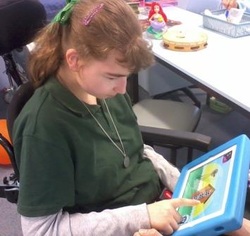Visual Learning Techniques
Visual learning techniques are essential for special needs students but they can still be a fantastic resource for mainstream students as we all learn visually but some of us are predominantly visual learners.
Traditionally visual aids were low tech but these days we are fortunate to have high tech resources such as computers, iPads and interactive whiteboards. Everyday low tech options include “visuals” (pictures that represent activities) such as maths, lunch time, eating, play ground, toilet, daily schedule as well as social stories that can be used to teach skills, behaviours or address issues. Visual aids also act as an efficient communication device where spoken language may be a barrier, for example, it can give a student the ability to indicate a need such as to drink, use the toilet or to eat.

It also helps the teacher ask questions and obtain answers or give instructions or directions throughout a day. You should always ensure you maintain a mix of low tech and high tech visual aids so that if the high-tech aid fails you still have low‐tech options as a back up.
Visual Timetables
A visual timetable is a set of visuals (consisting of Boardmaker visuals and/or photos) which depict a specific time schedule, whether it be a morning session, a full day or a week. It is established by the teacher for students.
Daily Diaries
A daily diary is a pictorial representation of the day. It can include the day of the week, the weather, feelings and activities. It is a learning tool, developed by the teacher to promote choice making and correct identification of visuals. Students select appropriate visuals to communicate their daily activities with parents/caregivers.
Websites for visual learning
One of the best websites for free downloadable visuals and visual sequences for use at school and home. You will save hours of time by using this excellent site.
SEN Teacher is full of free printables for literacy, math and communication. This section has visuals and AAC (alternative and augmentative communication) resources.
This site has hundreds of boardmaker resources, some of it is free or you can purchase a subscription.
Hundreds of free and low-cost symbol resource packs using Widgit symbols. The symbols assist students in the ability to ‘read’.
The Center for Autism and Related Disabilities (CARD)
Provides support and assistance for people with autism. This website provides an excellent introduction to using visuals.
A great website which is full free resources for social skills activities and behaviour management support. It includes many resources such as songs, games and activities, many are free. It has a great section on introducing visual schedules.
A parent operated website servicing the Autism Spectrum Disorder community of South Australia. It has free printable visual schedules.
This is a ‘livebinder’ which is a set of URL links to a wide range of websites which have tips and tricks as well resources for using visuals with students with special educational needs. It is regularly updated to ensure that all the links are current.
